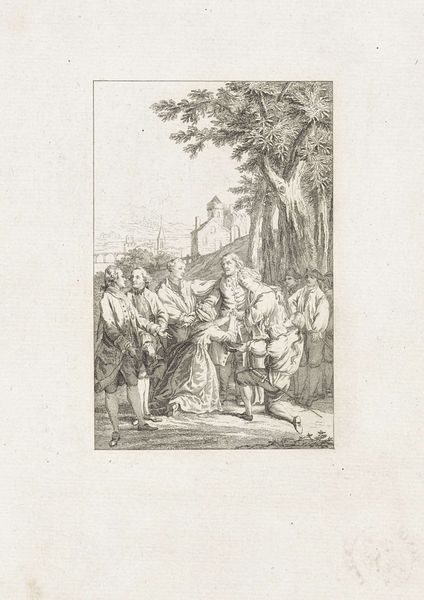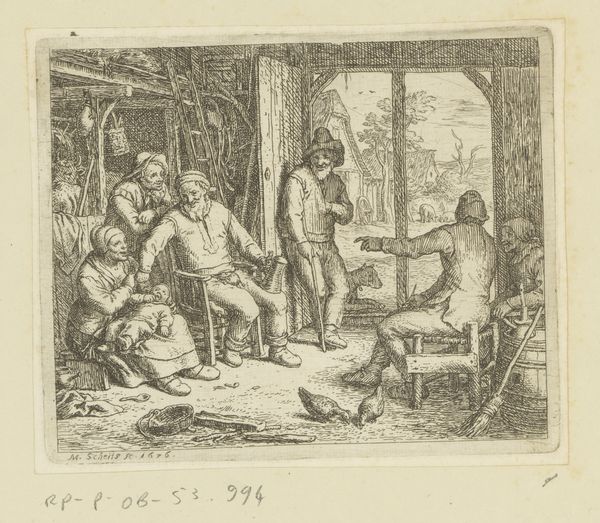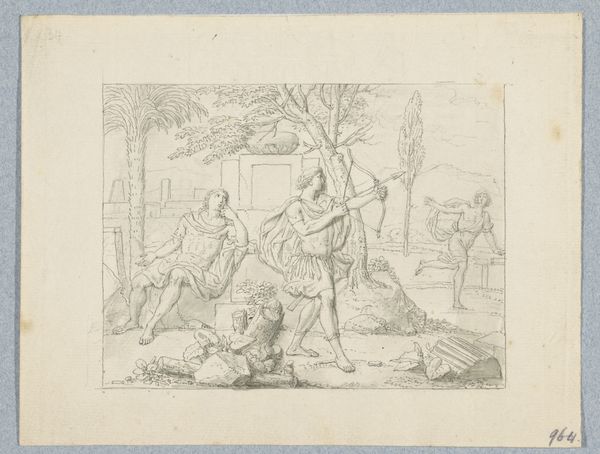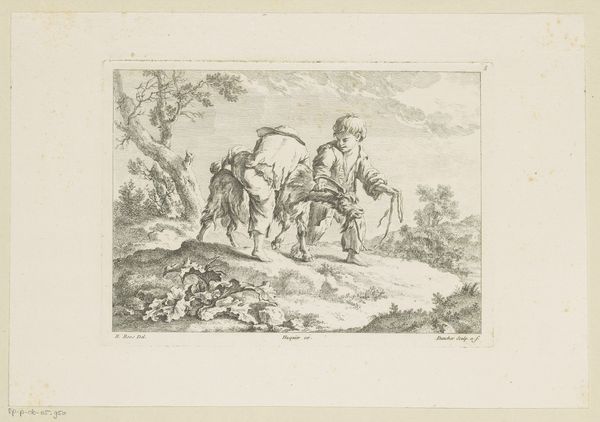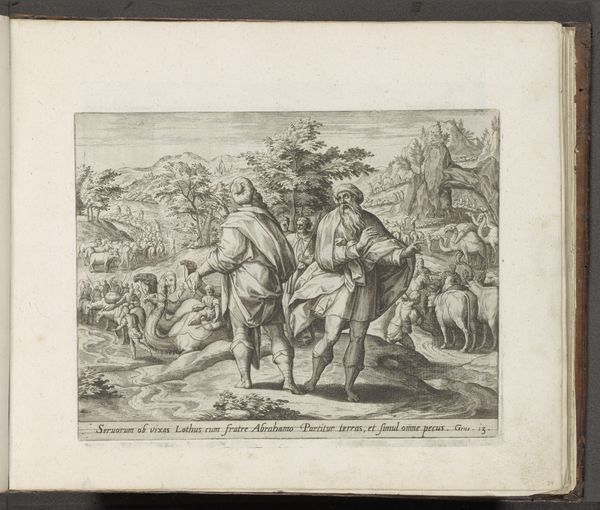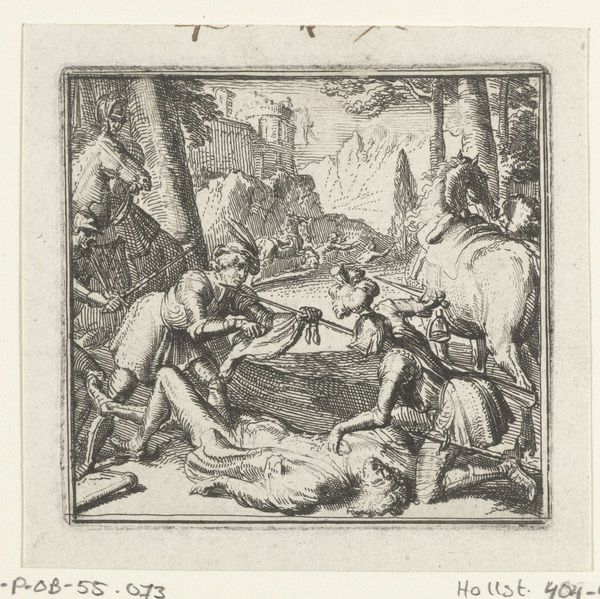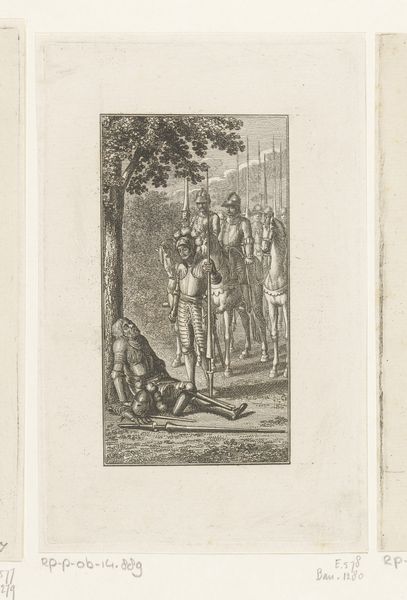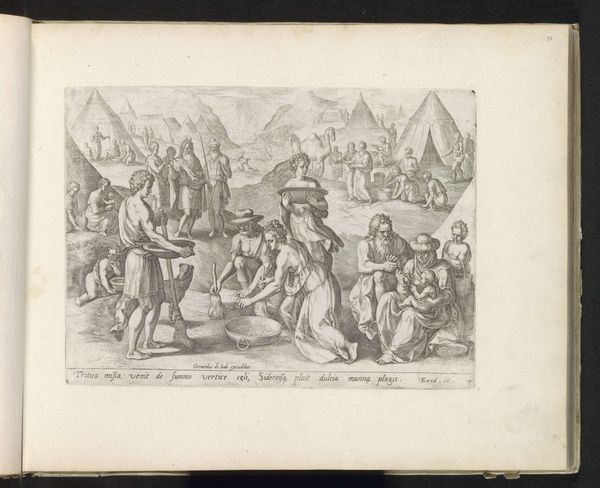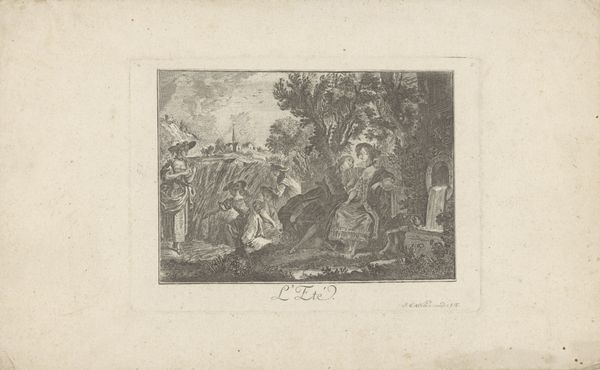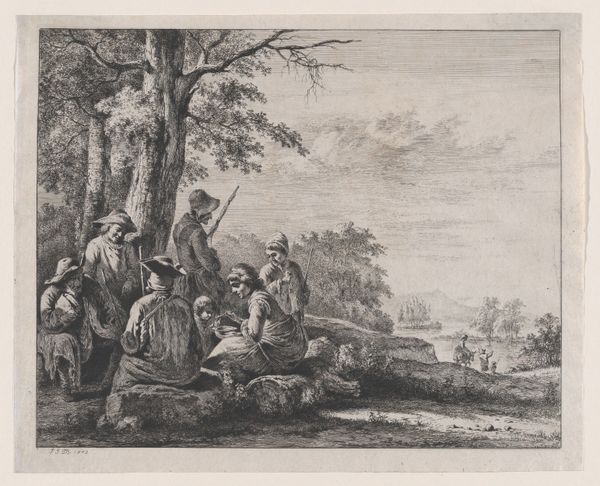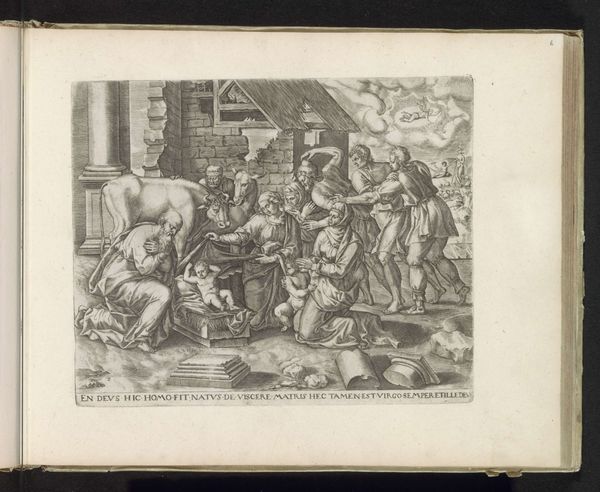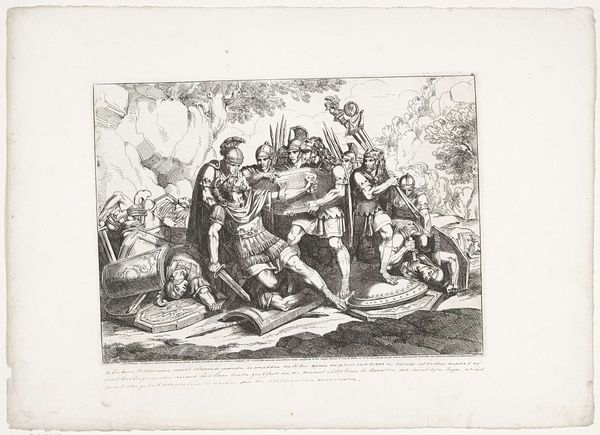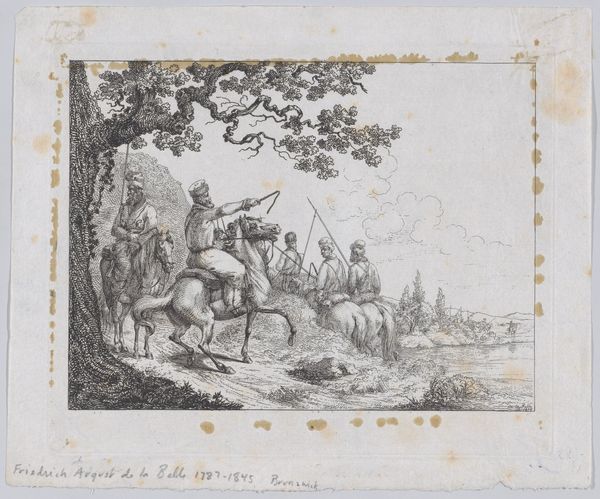
drawing, print, ink, engraving
#
drawing
#
comic strip sketch
#
narrative-art
#
baroque
# print
#
pen sketch
#
old engraving style
#
landscape
#
figuration
#
personal sketchbook
#
ink
#
ink drawing experimentation
#
pen-ink sketch
#
pen work
#
sketchbook drawing
#
genre-painting
#
storyboard and sketchbook work
#
sketchbook art
#
engraving
Dimensions: width 136 mm, height 157 mm
Copyright: Rijks Museum: Open Domain
Editor: This engraving, titled "Jager," was created by Marco San Martino sometime between 1625 and 1680. It’s a genre scene, and what immediately strikes me is how casually the figures are arranged within a detailed landscape. What historical or cultural narratives do you see embedded in this composition? Curator: It’s a curious image, isn't it? In its period, art's purpose shifted: how it functioned in society and what socio-political powers controlled artistic output became paramount. "Jager," appearing relatively soon after the conclusion of the Thirty Years' War in 1648, might reveal the shifting dynamics of social control in rural settings. Consider the role of the "Jager" - the hunter – traditionally an agent of aristocratic power in regulating access to resources, especially in post-war societies needing land redistribution. Editor: So, the hunter’s gesture could be interpreted as an exertion of power, despite the deceptively tranquil scene? Curator: Precisely. Ask yourself, who controls this scene's visual narrative? Note how San Martino placed the hunter between a subservient dog and resting figures. How does the tower looming in the background speak to ideas of control? And where might this scene be intended to be viewed – a collector's album, displayed within a public venue, or used for popular prints? Knowing that answer shapes interpretation of this engraving. Editor: It is amazing how contextualizing art transforms a simple image into a visual archive of social power dynamics. It feels less like looking at just "art" and more like reading history now. Curator: Exactly! When looking at an image, try and analyze the world it lived in, and how it speaks back. Then, the quietest image becomes the loudest political statement.
Comments
No comments
Be the first to comment and join the conversation on the ultimate creative platform.
